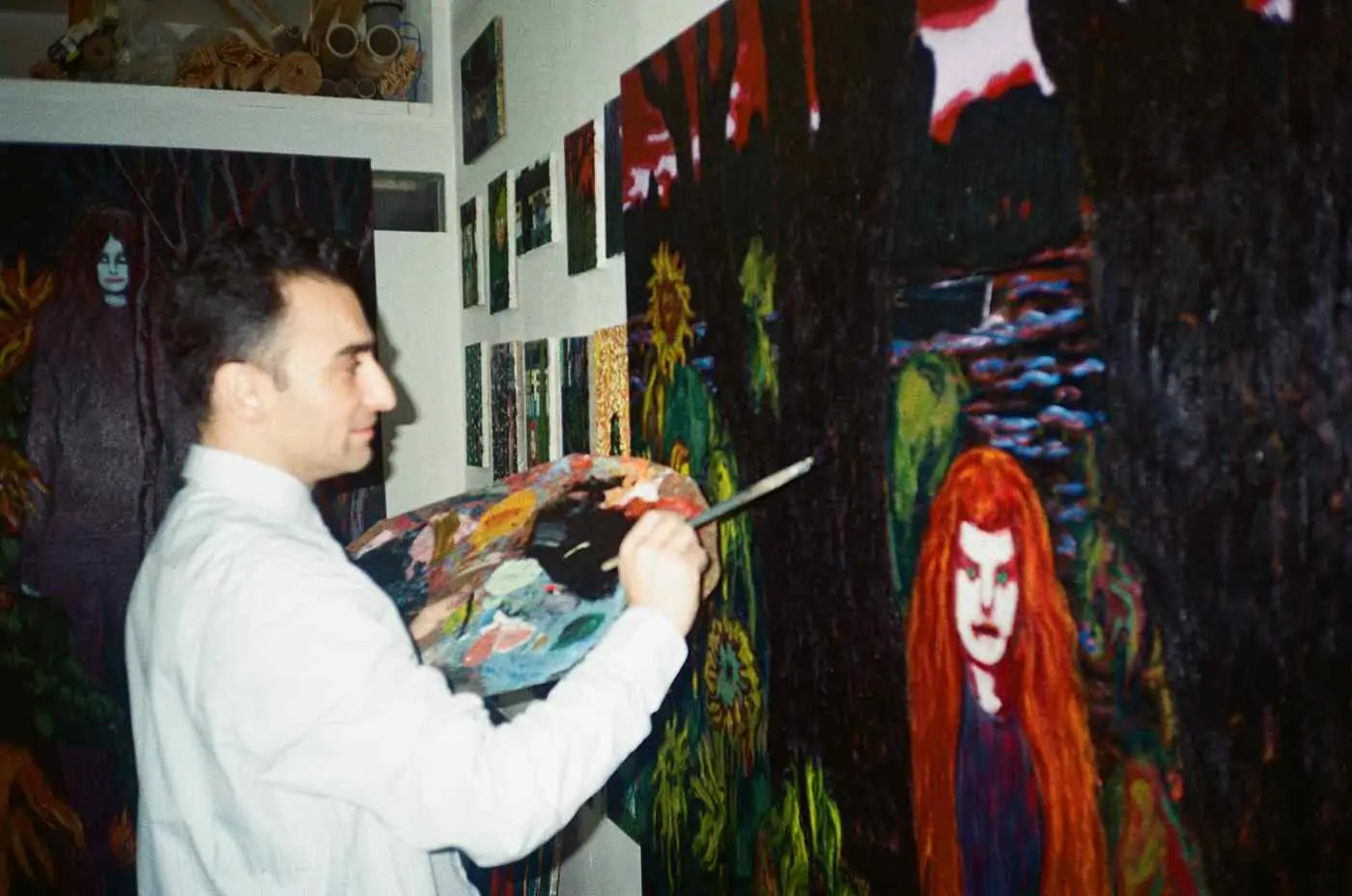Lebanese artist Omar El Lahib‘s paintings strike a unique balance between darkness and beauty. His work, vivid and mesmerising, casts a spell over the viewer, reminiscent of aesthetic alchemy. El Lahib’s landscapes are dreamlike and psychologically intense, a result of his exceptional use of light and colour. This technique transports the viewer into a mythical atmosphere, offering a painterly experience that transcends the ordinary. His work echoes Vincent van Gogh‘s sentiment, “I dream of painting, and then I paint my dream,” inviting endless interpretation.

The relationship between people and nature is often in the foreground. I often take my topics from my personal experience and mix them with my observations
Omar El Lahib
Deeply rooted in both theory and process, El Lahib draws inspiration from a myriad of sources, including the environment, photographs, and personal connections with friends and family. In his world, ordinary observations are transformed, eclipsing the mundane. His inspiration flows across the canvas unbound by rigid intention. Favouring primal expression over meticulous refinement, El Lahib achieves a seamless blend of abstraction and figuration. This blurs the line between reality and imagination, encouraging viewers to explore deeper layers of meaning and emotion.
A central theme in El Lahib’s work is the exploration of nature and humanity. Often, he depicts a lone figure, rendered with raw simplicity against a backdrop of richly hued trees, sunflowers, and other flora. This imagery subtly underscores humanity’s symbiotic relationship with nature.
El Lahib’s scenes captivate with their flamboyant yet enigmatic use of colour, light, and arrangement, creating a tangible sense of intrigue. However, the photographs accompanying this interview don’t fully capture the essence of his craft. To truly appreciate the effect and the subtle nuances of El Lahib’s work, one must experience them up close. It is in this proximity that their scale and texture become integral to the viewing experience.
Born in 1986 in Sidon, Lebanon, El Lahib studied Fine Art at Kunstakademie Düsseldorf and later settled in Cologne with his family. He cherishes his time in Düsseldorf for the in-depth discussions about his work with established painters, reinforcing his belief that “paintings don’t arise in a vacuum. It was here that Saatchi Yates discovered El Lahib’s “starry-filled Lebanese landscapes,” leading to his inaugural showcase at their St. James gallery space.
In his latest exhibition at London’s Saatchi Yates, his second solo showing at the gallery, El Lahib invites viewers into a mystical world that transcends the ordinary. Saatchi Yates, co-founded by Phoebe Saatchi Yates and Arthur Yates, has been recognized for showcasing emerging artists and exhibiting blue-chip contemporary art from leading private collections. We had the pleasure of experiencing El Lahib’s paintings and the delicacies of his homeland cuisine during a celebratory dinner for the opening of his exhibition. In this interview, we explore more about his practice, inspiration, and artistic journey.
Hi Omar, how are you? Could you start by sharing your journey into the arts, including your earliest memory of being drawn to them and how these experiences have influenced your career path?
Omar El Lahib: My earliest memory that I can relate to art is an experience I had in Lebanon when I was three or four years old. I saw my uncle building a structure, perhaps a mosque, out of wire and cardboard. I think he wasn’t happy with the result. So he poured gasoline on it and set it on fire. I don’t know if that was the beginning of my path, but it made a huge impression on me.
I don’t remember not drawing or painting. However, I know that I learned to draw and paint in a private painting school when I was 12 years old. At the age of 16 I learned how to use oil paint and many other painting materials. Shortly afterwards, I had my own studio and experimented a lot. I also copied the old masters and did a lot of studies in nature. Ever since I was 12 years old, I knew that painting was what I wanted to do my whole life. Even after my studies, I didn’t know that painting could also make a life possible. But I didn’t care about that either.
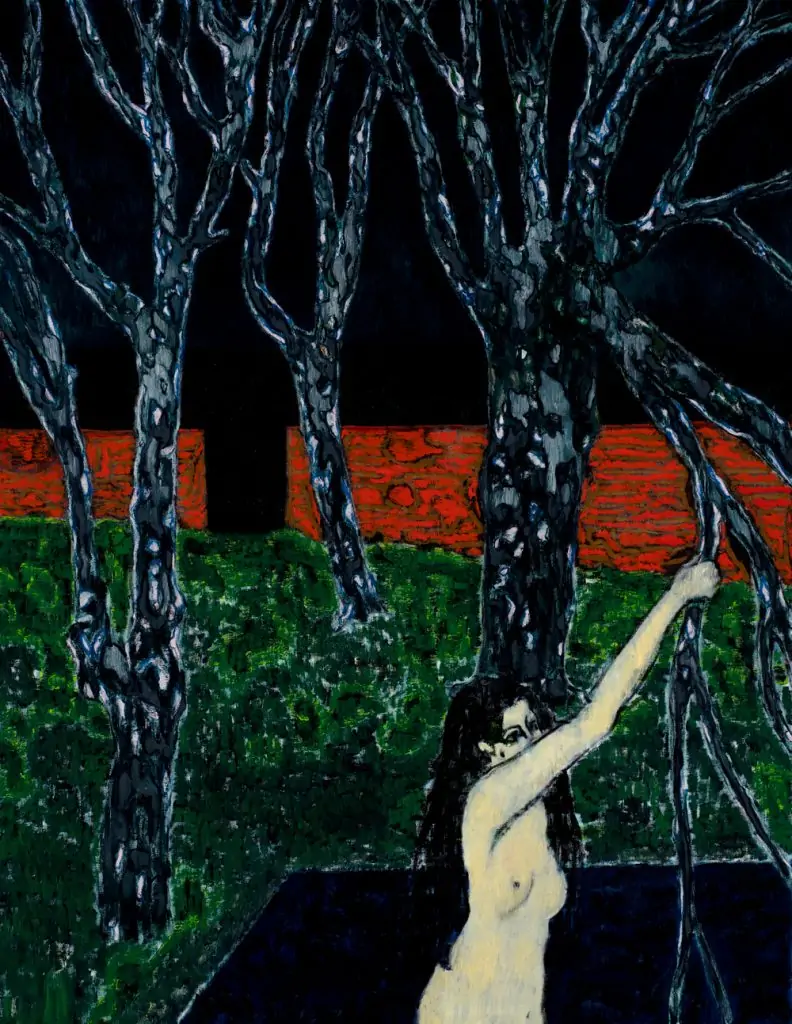
Your practice alternates between what seems like figuration and abstraction, often exploring human emotions like love, hate, and fear in a dreamlike atmosphere. Can we delve more into your practice, inspiration, and the themes in your work?
Omar El Lahib: My practice of painting is nothing new. I work with my immediate surroundings with memory or from photos. Even if this is not immediately apparent, often it’s just insignificant things that I turn into something big. However, the relationship between people and nature is often in the foreground. I often take my topics from my personal experience and mix them with my observations or with photo templates.
Like many, I am still looking for my place in life and in society. The experiences sometimes lead me to interesting images. Of course, I also find many topics from my immediate environment, such as friends, family, other painters and also from art history. At the moment, I’m interested in people, their fate and their ability to express themselves. I like artists who look at people very boldly and also know how to use them for strong emotions. But I also think it would be interesting to only discuss this aspect marginally and to bring other aspects more to the fore.

Furthermore, how or if does your Lebanese heritage influence your artistic approach, particularly in your painting methods and overall work philosophy?
Omar El Lahib: Both the Lebanese and the German sides are an enrichment for me and for my painting. I think my painting method is determined more by intellectual aspects, but also by skill and the urge to create something lasting. My work philosophy is influenced much more by the fact that it is no longer just about me. I am aware that I have a positive effect on different people and groups of people. Both the Lebanese and the German sides of me are more in the background in painting. The focus is on painting itself.
Could you walk us through your creative process, from the initial idea to the final piece? How do you balance the abstract and figurative elements to create a cohesive narrative in your paintings?
Omar El Lahib: Drawing is very important to me. Everything starts there. I examine the situation, the mood or the composition in several drawings and colour studies. This creates different versions or completely new images that I examine again. If I am convinced by a study, I try it on a big screen. The challenges are very similar on all three levels. Both in the drawing, in the colour study, and on the canvas.
I start with a rough preliminary drawing on the canvas. This is followed by several layers of watercolour. These dry quickly, and change is possible very quickly. Finally comes oil paint with all its possibilities. The difficulty lies in staying focused in the work process. It’s a balancing act between a rough image in your head and the
actual painting process. Often, you have to forget all the experiences in the study and completely immerse yourself in the picture and especially in the painting process. Anything else would lead to stagnation. There comes a moment when the image sets the direction, and you are just the assistant.
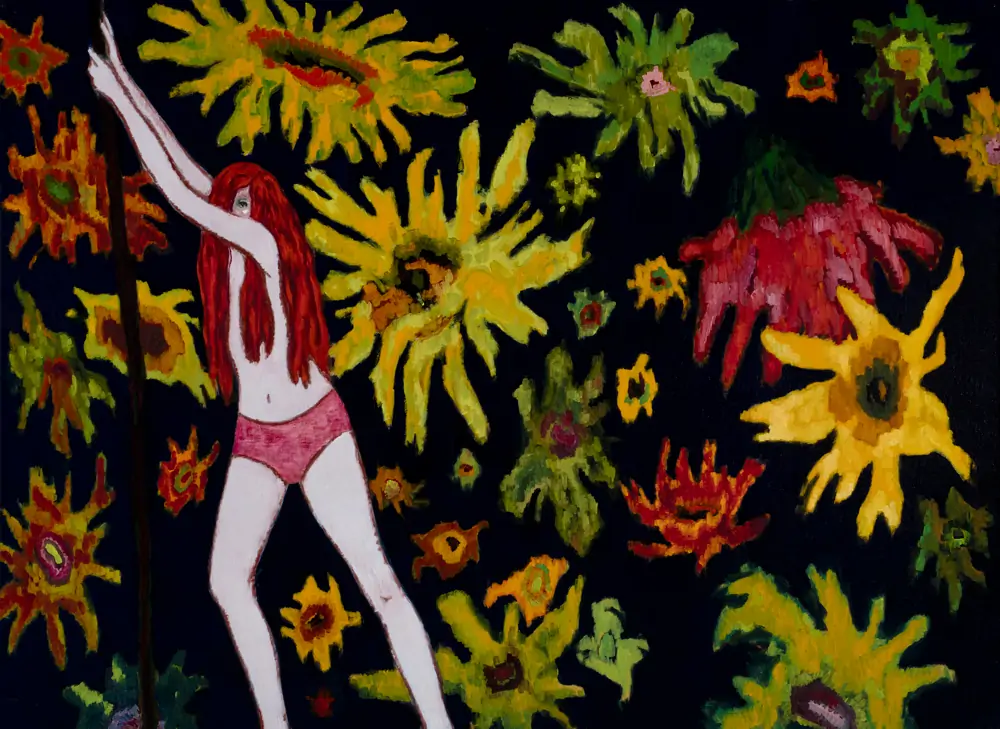
The dreamlike aesthetic of your paintings suggests a deep connection with the subconscious. Do you draw inspiration from your own dreams or subconscious mind, and how do you translate these intangible experiences onto the canvas?
Omar El Lahib: It is obvious that what I paint is not just everyday observation. It’s not always possible for me to control and manipulate things, but I have no desire to convey any message in painting. The painting process is complex and not very objective. I often have little control.
I try everything possible, such as drawings, studies and preliminary drawings on the canvas, so as not to completely lose the thread in the painting process. So it’s rather the opposite. I work with my immediate surroundings, with photos and seek to express the connection to our reality in painting. But it is also clear that I intentionally or unconsciously leave out a lot of things or put them in the background in order to create a kind of focus. I don’t think I’ll go so far as to completely lose touch with my immediate surroundings, although it sometimes seems that way.
I’m intrigued by a recurrent motif that features in your works, which seems to be the same woman with long hair in an almost identical pose, What is the significance of this figure in your paintings, and how does this figure contribute to the themes and experiences you explore?
Omar El Lahib: The woman with long hair is a great help to me. With it I am able to give the picture a direction or even a fate. However, it’s not just about the woman, but about the human figure in general. She serves as a mediator for me, as the other person. The viewer can identify with it more than with a wall or a tree. However, I want to keep the feelings and the role he gives her as open as possible. Sometimes I paint her as a human being, other times as an idea of human being, as a spiritual figure. It’s about the same with the Madonna. She has such a clear role in the picture, but many artists have been inspired by a wide variety of situations without ever seeing Maria in person.
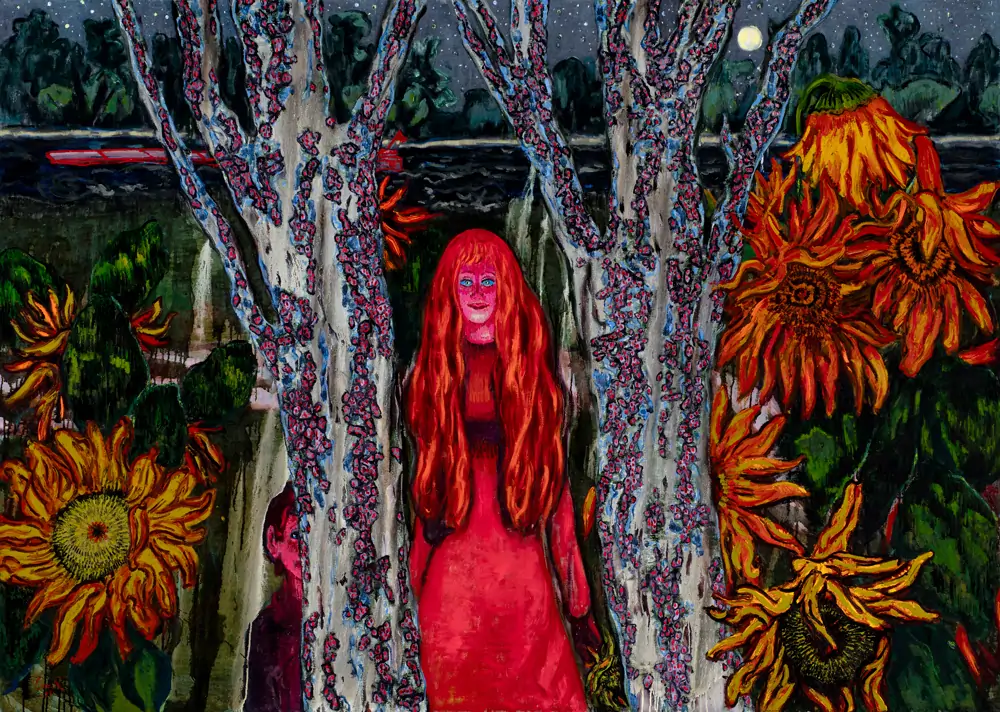
Building on that, you’ve mentioned that you will paint over anything in your painting that does not serve to concentrate the composition. Can you share more about this decision-making and editing process? How do you determine when a painting is complete?
Omar El Lahib: Painted over is a somewhat radical term, even if this happens in some pictures. I often have too many objects or spotlights in the picture. I fall in love with these passages very quickly without realizing that they interfere with the actual topic. Then, the painful part begins.
These places are often put into perspective, and many details disappear. Sometimes, however, it doesn’t work and I have to radically paint over these areas. Often, only the smallest amount remains in the picture, i.e. what received little attention. Then, suddenly, it becomes the centre of the picture, and everything else around it becomes a helping hand. That is the phoenix moment when a picture that was thought lost rises from its ashes and surprises me. I have often spent months working on a picture dissatisfied, and suddenly, everything shines and makes sense. This triumph encourages me to continue.
You’ve just opened your second solo exhibition at London’s Saatchi Yates, featuring a new body of large-scale and small-scale works. Can you tell us more about the exhibition and its essence?
Omar El Lahib: The new pictures came out of my studio quite quickly. I painted a lot of sunflowers this year and last year. It all started before my first solo exhibition in 2023. There, I painted a few pictures with sunflowers, but they were more of a supporting role and much more in the background. This time, they clearly come to the fore, even if people continue to play the central role. The exhibition essentially focuses on people and nature, especially nature and sunflowers.
Sunflowers rarely appear in art history, but for some reason, they stand out. I think sunflowers are something special and appeal even to people who have little to do with flowers. They trigger a lot of feelings in us. They do not represent a clear message.
Just like my paintings, sunflowers invite a variety of interpretations.
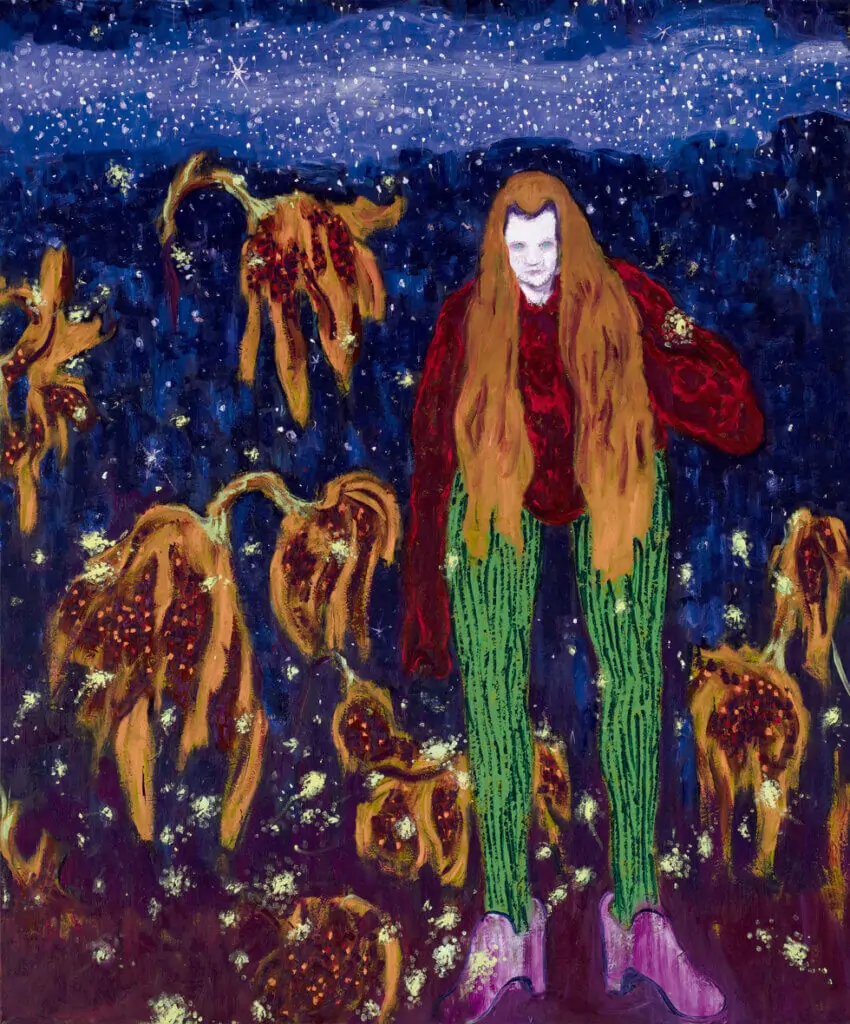
190 x 160cm
Your first exhibition was the opening for Saatchi Yates’ new 10,000 sq ft gallery space in the heart of London’s St James. Can you share how you began working with the gallery and what the experience has been like?
Omar El Lahib: Saatchi Yates Gallery is a large gallery with a special location in the heart of London. For me, it is, of course, very lucky to work with this gallery. It started with them writing to me and telling me that they saw my final presentation at the Düsseldorf Art Academy and would like to see more pictures. They also invited me to London to meet them, which I did.
Afterwards, they visited me in my studio, and together, we chose pictures for my first solo exhibition. The rest is known. My experience with Arthur and Phoebe was very positive. They care passionately about their artists and the exhibitions they organize. I think for me, as a relatively young artist, it is particularly exciting to work with young people who, like me, are at the beginning of their careers and want to push it forward no matter what. I am very, very excited about the next few years and the next steps we will take together.
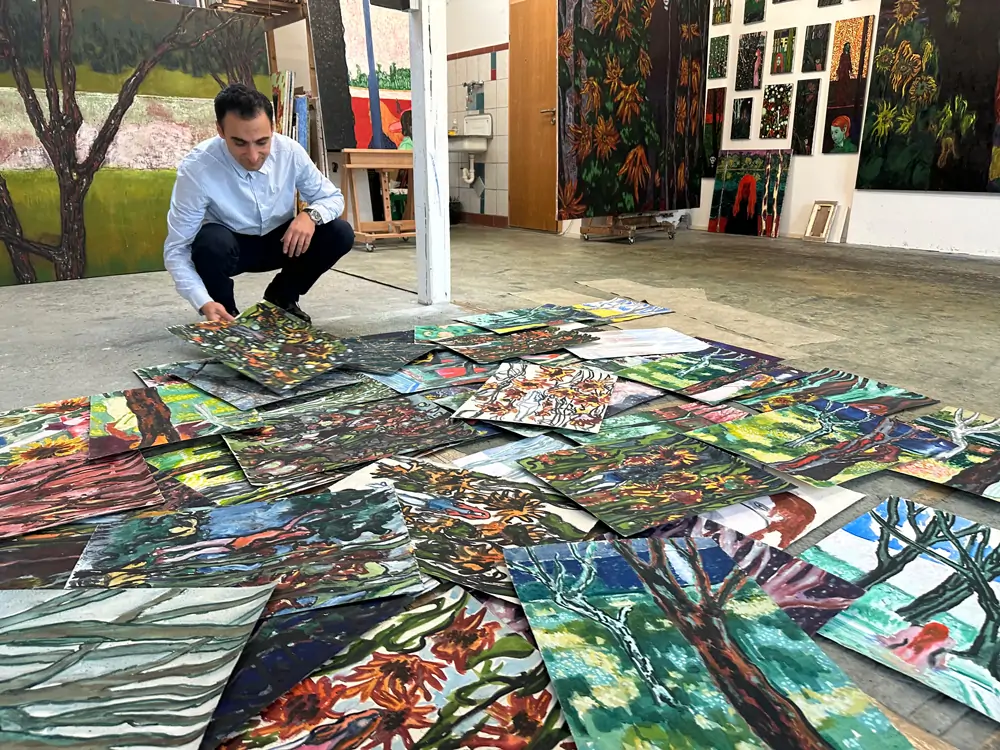
Looking forward, are there any specific themes or materials you are considering experimenting with or exploring in your work?
Omar El Lahib: During my studies at the Düsseldorf Art Academy, I came into contact with a lot of materials. I’ve tried everything possible. In addition to painting, I enjoyed lithography and working with clay. Maybe at some point, I’ll find time to examine at least one of these two materials in more detail and work with it.
Finally, could you share your philosophy on art? How do you understand and express art’s core meaning and importance in your personal and professional life?
Omar El Lahib: For me, art is far too broad a term to do anything with. I am a painter. For me, a canvas with a format of 60×80 cm is challenging enough. I think that both my drawing and my painting do not represent any particular innovation. I work with the same challenges that painters faced before me. It’s the materials, of course, but also the everyday challenges of both a spiritual and emotional nature.
Painting helps me to get in touch with people through this medium and to be amazed again that we, as well as future generations, can communicate through this medium. It is a language that works without words and without always wanting to be right.
Omar El Lahib at Saatchi Yates is on until the 10th April 2024
©2024 Omar El Lahib


